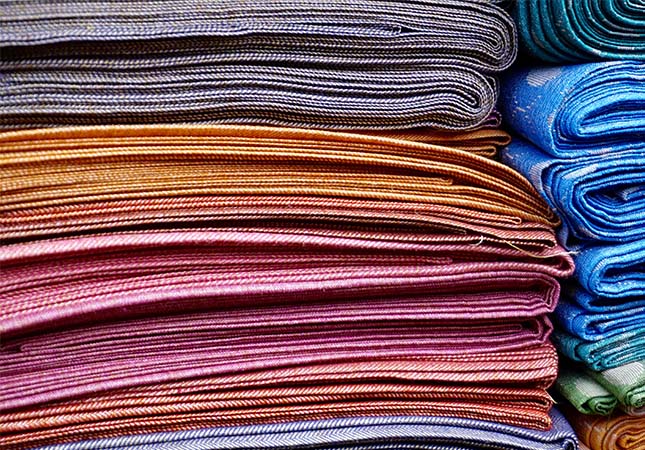The moisture regains rate of a textile material that finished by cloth cutting machine when it reaches equilibrium under a standard atmosphere is called the standard moisture regain rate. The actual moisture regain of each textile fiber varies with the temperature and humidity conditions. In order to compare the moisture absorption capacity of various textile materials, the standard moisture regain is commonly used as an important indicator for comparison.

Weight is an essential basis for trade valuation and cost accounting, and it is also affected by the moisture regain rate. There are other factors that affect the moisture regain rate.
Factors That Affect Moisture Regain Rate
1. Internal Cause
In the fiber molecule, the number and the strength of hydrophilic groups of hydrophilicity affect the size of its hygroscopic performance. The more hydrophilic groups exist, the stronger the hydrophilicity, and the hygroscopicity will be.
For the fibers that have low macromolecular polymerization, the hygroscopicity will be stronger than others if the macromolecular end group is a hydrophilic group.
Different concomitant organisms and impurities have different effects on hygroscopicity. For example, cotton fiber usually contains cotton wax, and wool fiber commonly contains oil, which all weaken the hygroscopic ability of the such fiber.
2. External Cause
The temperature is the main external cause that influences the hygroscopic ability of textile fibers. In a stable temperature environment, the fiber hygroscopicity will be better if the relative humidity is high. When the speed of airflow is fast, the equilibrium moisture regain of the fibers will correspondingly decrease.
The Effect of moisture Regain Rate on Textiles
1. Effect on Weight
The change of the moisture regain will cause a change in the textile material weight. It should be emphasized that in trade, the standard weight is used as the basis for payment, otherwise, the fairness of the trade will be lost, which is also one of the main reasons for trade disputes.
2. Effect on Length & Cross Section Area
If the moisture regains rate increases, it will cause the fiber to expand in volume, that is, the lateral expansion is much greater than the longitudinal expansion. The macromolecules are arranged along the axial direction, and the molecular spacing will increase after moisture absorption without an increase in the macromolecule's length. The fiber hygroscopic expansion not only makes the fibers thicker and stiffer but is also one of the reasons for the fabric shrinkage.
3. Effect on Textile Machine
Changes in moisture regain lead to changes in fiber mechanical properties, which in turn affect textile processing and product quality. If the moisture regain is too low, the fiber will become more rigid and brittle, easily broken during processing, and the static electricity phenomenon will also be obvious; if the moisture regains is too high, the fibers will not be loosened easily, and the impurities in them will be difficult to remove, and they will be easily entangled with each other. Kinks, which tend to wind up parts on the machine, can cause fluctuations in carding, drafting, weaving, etc. processes. Changes in cohesion will also change the structure of the yarn and the quality of the fabric, resulting in instability or changes in yarn strength, hairiness, evenness, fabric size, fabric density, etc.
The core of the textile machinery industry is the quality of textile materials made up through a series of fabric machines, which are manufactured by textile machinery enterprises. Because the quality of the textile material decides whether the downstream customer will trust their fabric machines and be willing to cooperate again or not. So all the indicators, such as moisture regain rate, that affects the trade of textile materials will directly or indirectly have influences on the textile machinery development.




